Many Americans dread opening the energy bill when it comes. With your electric bills spiking all the time, it’s only right to wonder if you are alone in this situation. In fact, you may just wonder if another State might offer you cheaper electricity.
As your reliable electrician technicians, we come through with the information you need to satisfy this curiosity and probably make a decision to move.
Most Expensive States for Electricity (as of June 2019)
Hawaii – Hawaii sits top of the list with 32.45 cents per kWh. Hawaii has the most expensive electricity rates at any time. It relies heavily on petroleum as the main source of power, and this resource is consistently costly. The State is moving towards using solar energy and geothermal energy sources.
Alaska – Alaska’s electricity is like that of Hawaii. The State depends on petroleum liquids as well for their electricity. The rate is 23.51 cents per kWh. And also like Hawaii, Alaska is harnessing geothermal energy sources for renewable energy.
Connecticut – The State has an electricity rate of 23.1 cents per kWh. It is the most expensive state in the Northeast. The State is working towards obtaining electricity from renewable sources.
Least Expensive States for Electricity (as of June 2019)
Louisiana – Louisiana is popular for its oil refineries. Its high number of industries make it one of the highest energy consumers in the country. The electricity rate in the State is, however, 9.66 cents per kWh. It is the lowest dropping below Washington this year.
Arkansas – More than half of the State’s energy is generated from coal. Arkansas has an electricity rate of 10.35 cents per kWh.
Washington – For years, Washington always ranked the lowest in electricity rates. It is the largest hydroelectric power producer in the U.S. The electricity cost is 9.90 cents per kWh.
Why the electricity costs differ by State
Electricity is sourced from the conversion of other raw materials. Hence, the electricity rate for a state usually depends on their raw materials, the cost of converting them to electricity, and electricity use. So, states like Hawaii have expensive electricity rates because they depend on expensive materials like crude oil. Louisiana, on the other hand, depends on one company with several power plants. This makes their electricity cost low. Different seasons also contribute to electricity costs.
What you can do
Not everyone is lucky to live in the States with the lowest electricity costs. Even when you do, who wouldn’t want to beat their electricity bill down to the minimum? Tips you can use to reduce those figures on your bill significantly include:
- Change your light fixtures to energy saving options; Use dimmers and LED bulbs.
- Get a smart thermostat; a smart thermostat offers flexibility and control. It helps you save up to 10% of energy.
- Install ceiling fans; using ceiling fans can save as much as 30% on the bills.
- Dress the part; Wear light clothes during hot days and thick clothes during cold ones.
- You can also opt for an audit to know how or where to save from the Electric Connection.





 Flickering lights are almost impossible to ignore. They can be very annoying and dangerous if not solved. Flickering lights can be fun and raise no cause for alarm if the lights in question are decorative lights.
Flickering lights are almost impossible to ignore. They can be very annoying and dangerous if not solved. Flickering lights can be fun and raise no cause for alarm if the lights in question are decorative lights. 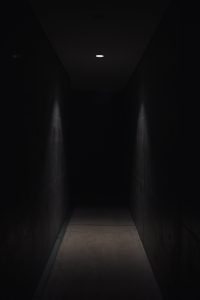 When a part of your home or fixture suddenly goes dark, it is usually because of an individual circuit breaker tripping. The best way to find out if this is the case is to check your main electrical panel. The main electrical panel is located in the basement or utility room. A tripped breaker is always represented by a breaker switch facing a different direction from all others. For example, others may seem ON and just this one switch seems OFF or in-between.
When a part of your home or fixture suddenly goes dark, it is usually because of an individual circuit breaker tripping. The best way to find out if this is the case is to check your main electrical panel. The main electrical panel is located in the basement or utility room. A tripped breaker is always represented by a breaker switch facing a different direction from all others. For example, others may seem ON and just this one switch seems OFF or in-between.  Electrical hums and buzzes are quite common in the home. The annoying thing about these sounds is that they can be hard to locate and most times they indicate more serious electrical problems.
Electrical hums and buzzes are quite common in the home. The annoying thing about these sounds is that they can be hard to locate and most times they indicate more serious electrical problems.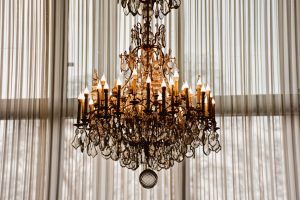 Chandeliers are valuable lights admired for the elegance and lighting quality they bring to a room. Any chandelier can add glamour and beauty to a home or even a commercial building. They come in various sizes, shapes, and designs. Some people believe that chandeliers are for high ceilings and dining rooms. A chandelier is actually quite versatile as it can be used in any part of the home and with both low and high ceilings.
Chandeliers are valuable lights admired for the elegance and lighting quality they bring to a room. Any chandelier can add glamour and beauty to a home or even a commercial building. They come in various sizes, shapes, and designs. Some people believe that chandeliers are for high ceilings and dining rooms. A chandelier is actually quite versatile as it can be used in any part of the home and with both low and high ceilings. 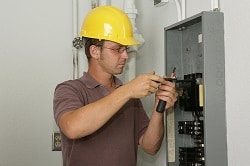 The words ‘electrical contractor and electrician’ are often used interchangeably. Many people do not know the difference between both but assume they mean the same thing. In this article, we will discuss what an electrical contractor does and how they are different from an electrician.
The words ‘electrical contractor and electrician’ are often used interchangeably. Many people do not know the difference between both but assume they mean the same thing. In this article, we will discuss what an electrical contractor does and how they are different from an electrician. 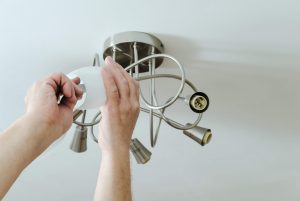 We often see light fixture installations as the easiest tasks of an electrician. Hence, most people try to do them without professional help. A light fixture is described as an electrical device containing an electric lamp. They usually come with an installed switch for users to control the light. For light fixtures to work, they must be connected to a power source. Common examples are your ceiling lights, chandelier, outdoor lights and so on.
We often see light fixture installations as the easiest tasks of an electrician. Hence, most people try to do them without professional help. A light fixture is described as an electrical device containing an electric lamp. They usually come with an installed switch for users to control the light. For light fixtures to work, they must be connected to a power source. Common examples are your ceiling lights, chandelier, outdoor lights and so on. 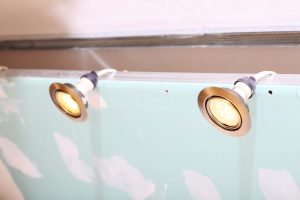 An electrical contractor will always tell you that good lighting is everything. These are not empty words as both homeowners and store owners can agree. The benefits and functions of light in any location are numerous. It is one of the primary reasons we use electricity. Lighting illuminates a space to give you clarity and vision, but in contemporary times they do even more. Lights can boost your business in a commercial building. They can improve security, productivity, and efficiency. Also, studies have shown that lights can be associated with good mood and a relaxed mind.
An electrical contractor will always tell you that good lighting is everything. These are not empty words as both homeowners and store owners can agree. The benefits and functions of light in any location are numerous. It is one of the primary reasons we use electricity. Lighting illuminates a space to give you clarity and vision, but in contemporary times they do even more. Lights can boost your business in a commercial building. They can improve security, productivity, and efficiency. Also, studies have shown that lights can be associated with good mood and a relaxed mind. The electrical panel is the center of electricity supply in a home or building. It is called several other names such as the distribution board and breaker panel. You can identify the electrical panel as a metal electrical service board, located outside the home, in the garage, or the utility room. It is a network of wires and switches.
The electrical panel is the center of electricity supply in a home or building. It is called several other names such as the distribution board and breaker panel. You can identify the electrical panel as a metal electrical service board, located outside the home, in the garage, or the utility room. It is a network of wires and switches.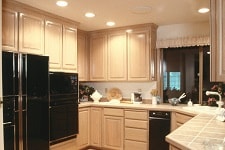 Recessed lighting are also known as downlights. They differ from regular lighting that drops from the ceiling. Recessed lighting is installed within the ceiling and only the shining light can be seen. They appear as a light shining from a hole in the ceiling.
Recessed lighting are also known as downlights. They differ from regular lighting that drops from the ceiling. Recessed lighting is installed within the ceiling and only the shining light can be seen. They appear as a light shining from a hole in the ceiling.